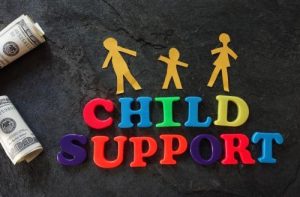If you are paying child support, you must bring proof of income and documentation of the payments you have made or are expected to make for your children. These can include proof of rent or car payments for the custodial parent, child care, and cell phone bills. If you don’t receive public assistance, you can also request legal representation. The amount you owe should be at least a few hundred dollars. In some cases, it may even be more.

It is important to remember that child support is a court-ordered amount of money, regardless of whether one parent has the custody of the child. If you cannot afford to pay the entire amount, you can get a modification. This process will be faster if you act quickly. You can also modify the amount you pay when your circumstances change, such as getting a job or becoming self-employed. This is why it is important to follow the rules when it comes to paying child support.
While fathers are traditionally associated with child support, there are many mothers who are the ones who are responsible for it. While the non-custodial parent is not the primary caretaker, she may remain very involved in the child’s life. Child support is meant to balance the financial responsibility of raising the child. For those parents who share custody, child support is based on the time the child spends with each parent, and on the income of the non-custodial parent and his or her partner.
The amount of child support is usually paid monthly. The money is designed to cover the costs of the child’s basic living expenses, such as food and clothing. It is also used to pay for medical care. In most states, divorced parents are required to carry medical, dental, and vision insurance. If one parent has better employer benefits, he or she will also be responsible for paying child support. In addition to paying child support, this money can help with other expenses, such as housing.
When calculating child support, a trial court will look at the standard of living of the children. The standard of living of the parents can vary based on the incomes and expenses they receive each month. Child support is often based on what the children would have been living with in a non-custodial parent’s household before the divorce. A financial form is required of the parents during divorce. It also includes the amount of each parent’s monthly income and expenses.
Some states include provisions for college education. Children’s extracurricular activities, such as sports, may be covered by child support. This money can be used for tuition, books, lunch money, and other necessities. Child support can also cover the cost of daycare services or nannies. Some states even require the noncustodial parent to contribute to college expenses. The goal is to avoid having the children suffer in divorce. So, while child support is a challenging process, it is still important to remember that it’s for their well-being and happiness.
A parent with physical custody of the child is presumed to be spending directly on the child’s needs. This may include health care costs that are not covered by insurance and child care expenses while the custodial parent is at work. Mandatory add-on expenses include the cost of health insurance for the child, any unreimbursed medical bills, co-payments, and the cost of necessary child care for the working parent. It’s important to understand how child support is calculated, as the amount you owe is determined by the parent’s income and resources.
A child may be eligible for continued child support after a certain age. For example, if the child is disabled, he or she may receive support until age 26 (October 2021). The court can also terminate the support earlier if the child becomes emancipated before turning 21. However, the child may become emancipated before turning 21 if he or she becomes financially independent. It is important to understand the reasons why child support payments are needed, and how they are calculated.
Some critics of child support say the payments are simply a punishment for the non-custodial parent, rather than a way to provide for the children. However, courts recognize that both parents incur costs while caring for their children, and therefore, the money received as child support is a fair amount for each parent. The court recognizes this fact by requiring parents to keep track of the amount they owe. In addition, direct child care expenses are credited against the amount owed by the non-custodial parent.